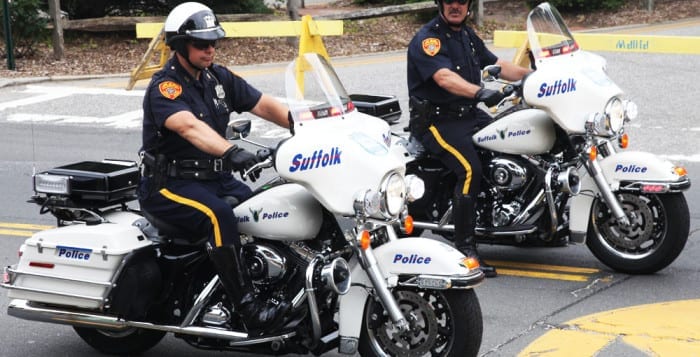Suffolk County police seek federal funding for body cameras
While the Suffolk County Police Department has applied for federal funding to embed body cameras into its force, officials recognized that there is a long way to go in terms of establishing protocol and before officers start donning the devices.
In May, the U.S. Department of Justice announced a $20 million Body-Worn Camera Pilot Partnership Program, with $17 million going toward competitive grants to purchase the cameras, $2 million for training and technical assistance, and $1 million for the development of evaluation tools to study the best practices.
The pilot is part of President Barack Obama’s (D) proposal to invest $75 million over three years to purchase 50,000 body cameras for law enforcement agencies.
The program’s launch follows a series of high profile incidents, including the deaths of Michael Brown in Ferguson, Mo., Eric Garner in Staten Island and Freddie Gray in Baltimore, Md., which raised questions of alleged police brutality.
“Body cameras and new technology will not be going away, and if it benefits the officers and citizens of Suffolk County, we are interested,” Deputy Chief Kevin Fallon said in a phone interview.
An Economist/YouGov poll published earlier this year stated that 88 percent of Americans support police officers wearing body cameras, and 56 percent strongly favor the idea, while only 8 percent oppose.
“This body-worn camera pilot program is a vital part of the Justice Department’s comprehensive efforts to equip law enforcement agencies throughout the country with the tools, support and training to tackle the 21st century challenges we face,” U.S. Attorney General Loretta E. Lynch said in a statement.
According to a camera implementation guide from the Justice Department, “by providing a video record of police activity, body-worn cameras have made their operations more transparent to the public, and have helped resolve questions following an encounter between officers and members of the public.”
While the program seeks to protect officers and citizens, Fallon said there are issues and concerns.
“This is more than simply about body cameras itself,” he said.
Suffolk County Chief of Support Services Stuart Cameron said one of the biggest issues is how to store the videos. Not only would archiving be expensive, the volume of high definition videos would be “tremendous.”
New protocols would also have to be established to determine how long a video is saved, and in what circumstances the video could be used.
The issue of privacy would need to be tackled before any body cameras go into action, as well.
“We don’t know if citizens would be OK with cameras filming in their house,” Fallon said.
In addition, police have to figure out how to handle sensitive cases dealing with witnesses and sexual assault victims, as their identities need to be protected.
The procedure of when to turn the camera off and on is not set in stone by the Justice Department. Rather, the grant program is intended to help identify the best practice for a body camera’s many uses, including when, and when not, to film.
“At what point does it become a privacy issue?” Cameron said. “Does a citizen’s right override protocol to continue filming?”
There are more than 2,700 different types of sworn officers in the SCPD, including plain-clothes officers, detectives and chiefs. The department would need to determine if every type of officer would wear a body camera.
Fallon and Cameron said the department would look at pilot programs across the country to see how they are handling the issues, and would also want to hear residents’ thoughts.
If a grant is received, community meetings will be held to educate the public.
Officers would have to be trained as well.
“Giving clear information to the officers is important,” said Fallon.
In 2012, a police department in Rialto, California partnered with the Institute of Criminology at the University of Cambridge, in England, and randomly assigned body-worn cameras to various officers across 988 shifts. The study showed a 60 percent reduction in officer use of force incidents.
The study also showed that shifts without cameras experience twice as many use of force incidents as shifts with cameras. There was an 88 percent reduction in citizen complaints between the year prior to camera implementation and the year following deployment.
In the county police’s application, the department had to establish an implementation plan and a training policy. Fallon said he was unable to provide additional details.
Police forces can expect to hear if they’ve received the grant by Oct. 1, according to the Justice Department.
Joan LaRocca, a public affairs specialist for the department, said 50 law enforcement agencies, along with one training and one technical assistance provider, are expected to receive grants.







